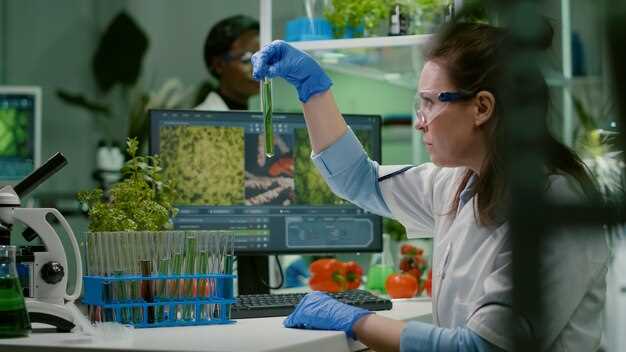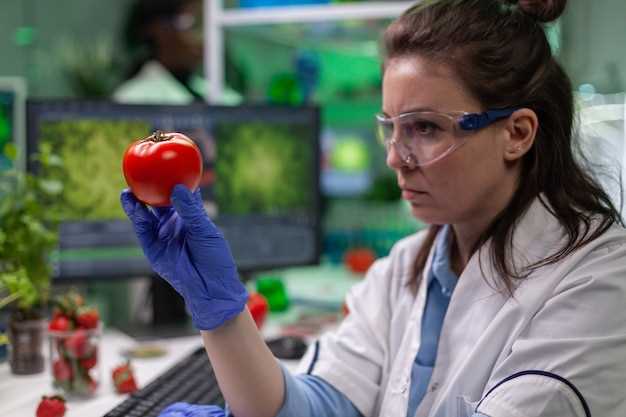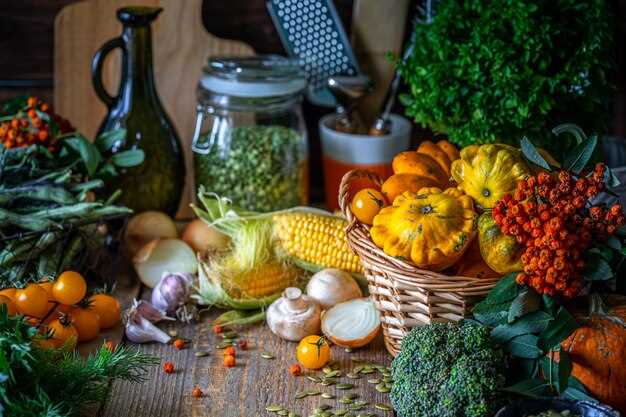
Have you ever wondered about the intricate processes that occur before your food reaches your plate? The world of food is a captivating realm, where nature’s elements intertwine with human ingenuity to create a symphony of flavors and nourishment. From the moment a seed is planted in the fertile soil to the final presentation on your table, a remarkable chemistry unfolds, shaping the taste, texture, and nutritional value of the food we consume.
Within this captivating journey, countless chemical reactions occur, transforming raw ingredients into delectable dishes. It is a dance of molecules, where proteins denature, carbohydrates caramelize, and fats undergo oxidation. The interplay of acids and bases, enzymes and substrates, creates a harmonious balance that tantalizes our taste buds and fuels our bodies.
But the chemistry of food extends far beyond the realm of taste. It encompasses the preservation and safety of our sustenance, ensuring that it remains fresh and free from harmful pathogens. From the moment food is harvested, a delicate balance is struck between the forces of decay and preservation. Through the art of canning, freezing, and fermenting, we harness the power of chemistry to extend the lifespan of our food, allowing us to enjoy the bounties of nature throughout the year.
Moreover, the chemistry of food is intimately intertwined with our health and well-being. Nutrients such as vitamins, minerals, and antioxidants play a vital role in supporting our bodily functions and protecting us from disease. Understanding the chemical composition of our food enables us to make informed choices about our diet, ensuring that we nourish our bodies with the essential building blocks they need to thrive.
So, join us on a captivating journey as we delve into the fascinating world of food chemistry. From the fields where crops are cultivated to the kitchens where culinary masterpieces are crafted, we will unravel the secrets behind the flavors, textures, and nutritional value of the food we savor. Prepare to be amazed by the intricate chemistry that lies beneath each bite, as we explore the captivating journey from farm to table.
Understanding the Chemical Composition of Food
In this section, we will delve into the intricate makeup of the food we consume, exploring its complex chemical composition. By gaining a deeper understanding of the various elements and compounds present in our food, we can better appreciate the role they play in our overall health and well-being.
Food is not simply a source of sustenance; it is a rich tapestry of molecules, each with its own unique properties and functions. From carbohydrates and proteins to fats and vitamins, these chemical components work together to provide us with the energy and nutrients necessary for our bodies to function optimally.
Carbohydrates, for example, are a primary source of energy, while proteins are essential for growth and repair. Fats, on the other hand, serve as a concentrated source of energy and play a vital role in the absorption of fat-soluble vitamins. Vitamins and minerals, although required in smaller quantities, are crucial for maintaining various bodily functions.
By examining the chemical composition of food, we can also gain insights into the flavors and aromas that make our meals so enjoyable. The presence of volatile compounds, such as esters and aldehydes, contribute to the distinct smells and tastes that we associate with different foods. Understanding these chemical interactions can enhance our culinary experiences and inspire new creations in the kitchen.
Furthermore, comprehending the chemical composition of food allows us to make informed choices about our diet. By knowing the nutritional content of the foods we consume, we can tailor our eating habits to meet our specific dietary needs and goals. Whether it’s managing weight, addressing nutrient deficiencies, or optimizing athletic performance, a deeper understanding of food chemistry empowers us to make healthier choices.
In conclusion, exploring the chemical composition of food opens up a world of knowledge and appreciation for the intricate processes that occur from farm to table. By understanding the various elements and compounds that make up our meals, we can better nourish our bodies, enhance our culinary experiences, and make informed decisions about our diet.
The Role of Chemistry in Food Production
Understanding the intricate relationship between science and the creation of our daily sustenance is crucial in comprehending the multifaceted process that brings food from its origin to our tables. Chemistry, as a fundamental discipline, plays a pivotal role in every stage of food production, encompassing cultivation, processing, preservation, and even the sensory experience of consuming our meals.
Enhancing Agricultural Practices
Chemistry contributes significantly to the improvement of agricultural practices, enabling farmers to optimize crop growth and yield. Through the application of fertilizers, pesticides, and herbicides, chemists help to maintain soil fertility, combat pests and diseases, and control weed growth. By understanding the chemical composition of soil and plants, scientists can develop tailored solutions to enhance nutrient uptake, promote plant growth, and ensure the production of high-quality crops.
Ensuring Food Safety and Preservation
Chemistry plays a crucial role in ensuring the safety and preservation of our food. From the moment it is harvested, chemistry is employed to prevent spoilage, maintain freshness, and extend shelf life. Through the use of preservatives, antioxidants, and antimicrobial agents, chemists help to inhibit the growth of harmful bacteria, fungi, and other microorganisms that can lead to foodborne illnesses. Additionally, the development of packaging materials with barrier properties and the implementation of controlled atmosphere storage techniques rely on chemical principles to protect food from external factors that could compromise its quality and safety.
Furthermore, chemistry is instrumental in the analysis and detection of contaminants and adulterants in food. Sophisticated analytical techniques allow for the identification and quantification of potentially harmful substances, such as pesticides, heavy metals, and food additives. By ensuring compliance with regulatory standards, chemistry helps to safeguard consumer health and maintain the integrity of the food supply chain.
In conclusion, the role of chemistry in food production is indispensable. From enhancing agricultural practices to ensuring food safety and preservation, chemistry provides the knowledge and tools necessary to optimize the production, quality, and safety of the food we consume. By continuously advancing our understanding of the chemical processes involved, we can strive towards a more sustainable and secure food system for future generations.
The Impact of Chemicals on Food Safety

Chemicals play a significant role in the safety of the food we consume. They can have both positive and negative effects on the quality and integrity of the food we eat. Understanding the impact of chemicals on food safety is crucial in ensuring the well-being of consumers and maintaining a sustainable food system.
Chemicals, in the context of food safety, refer to substances that are intentionally or unintentionally added to food during its production, processing, packaging, or storage. These substances can include pesticides, preservatives, additives, contaminants, and residues from agricultural practices. While some chemicals are necessary for food production and preservation, others can pose risks to human health if present in excessive amounts or if they are toxic.
One of the main concerns regarding the impact of chemicals on food safety is the potential for contamination. Contaminants can enter the food supply chain at various stages, from the use of pesticides and fertilizers in agriculture to the migration of substances from packaging materials. These contaminants can include heavy metals, mycotoxins, antibiotics, hormones, and environmental pollutants. The presence of these substances in food can have detrimental effects on human health, ranging from acute poisoning to long-term chronic diseases.
Another aspect to consider is the use of chemicals in food production and processing. While chemicals such as pesticides and preservatives can help protect crops and extend the shelf life of food products, their excessive or improper use can lead to adverse effects. Overuse of pesticides, for example, can result in the development of pesticide-resistant pests, environmental pollution, and potential harm to non-target organisms. Similarly, the misuse of food additives and processing aids can compromise the nutritional value and safety of food.
Ensuring food safety requires a comprehensive approach that involves monitoring and regulating the use of chemicals in the food industry. Governments and regulatory bodies play a crucial role in setting standards and guidelines for the safe use of chemicals in food production, processing, and packaging. Additionally, consumers can make informed choices by being aware of the potential risks associated with certain chemicals and opting for organic or locally sourced food whenever possible.
- Chemicals can have both positive and negative effects on food safety.
- Contaminants can enter the food supply chain at various stages.
- The use of chemicals in food production and processing should be carefully regulated.
- Governments and regulatory bodies play a crucial role in ensuring food safety.
- Consumers can make informed choices to minimize their exposure to harmful chemicals.
Chemical Reactions in Cooking and Food Preparation

In the realm of culinary arts, a fascinating interplay of chemical reactions takes place during the process of cooking and food preparation. These reactions, which occur at various stages and temperatures, are responsible for transforming raw ingredients into delicious and visually appealing dishes that tantalize our taste buds.
One of the most fundamental chemical reactions in cooking is the Maillard reaction. This reaction occurs when proteins and sugars are subjected to high heat, resulting in the browning and development of complex flavors and aromas. From the golden crust on a perfectly seared steak to the crispy exterior of freshly baked bread, the Maillard reaction plays a crucial role in creating the desirable texture and taste we associate with cooked food.
Another important chemical reaction in cooking is fermentation. This process involves the conversion of sugars into alcohol or organic acids by microorganisms such as yeast or bacteria. Fermentation is responsible for the creation of various culinary staples, including bread, cheese, yogurt, and alcoholic beverages. The transformation of simple ingredients into these diverse and flavorful products is a testament to the power of chemical reactions in food preparation.
Enzymatic reactions also play a significant role in cooking. Enzymes, which are naturally occurring catalysts, break down complex molecules into simpler forms, aiding in the digestion and transformation of food. For example, the enzyme papain found in papaya helps tenderize meat by breaking down tough proteins. Understanding and harnessing the power of enzymatic reactions allows chefs to manipulate textures and flavors in their culinary creations.
Furthermore, chemical reactions are responsible for the preservation of food. Techniques such as pickling, curing, and smoking rely on the interaction of acids, salts, and smoke compounds with the proteins and fats in food to extend its shelf life and enhance its taste. These preservation methods have been used for centuries and continue to be integral to the culinary world.
In conclusion, the world of cooking and food preparation is a captivating realm where chemical reactions shape the taste, texture, and preservation of our favorite dishes. From the Maillard reaction to fermentation and enzymatic reactions, understanding and harnessing these chemical processes allows chefs to create culinary masterpieces that delight our senses.
The Science Behind Food Preservation Techniques
Preserving food is an essential aspect of ensuring its longevity and safety for consumption. Various methods have been developed over time to prevent spoilage, maintain nutritional value, and enhance the flavor of food. These preservation techniques rely on the principles of chemistry to inhibit the growth of microorganisms, slow down enzymatic reactions, and prevent oxidation.
1. Canning
Canning is a popular method of food preservation that involves sealing food in airtight containers and subjecting them to high temperatures. This process destroys microorganisms and enzymes, preventing spoilage and extending the shelf life of the food. The chemistry behind canning lies in the heat treatment, which disrupts the cellular structure of microorganisms, denatures enzymes, and creates a sterile environment within the can.
2. Freezing
Freezing is another widely used method of food preservation. By lowering the temperature, freezing slows down the chemical reactions that cause food spoilage. Ice crystals form during freezing, which can cause damage to the cellular structure of the food. However, proper packaging and quick freezing techniques can minimize this damage. The chemistry behind freezing involves the reduction of molecular motion, inhibiting enzymatic activity and microbial growth.
3. Dehydration
Dehydration is a preservation method that involves removing water from food, inhibiting the growth of microorganisms. By reducing the moisture content, dehydration prevents spoilage and extends the shelf life of food. The chemistry behind dehydration lies in the principle of osmosis, where water molecules move from an area of higher concentration (inside the food) to an area of lower concentration (the surrounding environment), effectively drying out the food.
4. Fermentation
Fermentation is a preservation technique that relies on the metabolic activity of microorganisms, such as bacteria and yeast, to convert sugars into alcohol, acids, or gases. This process creates an acidic or alcoholic environment, inhibiting the growth of harmful bacteria and extending the shelf life of food. The chemistry behind fermentation involves the breakdown of complex carbohydrates into simpler compounds, producing various byproducts that contribute to the preservation and flavor enhancement of the food.
- 5. Salting
- 6. Smoking
- 7. Pickling
- 8. Vacuum Packaging
These are just a few examples of the diverse range of food preservation techniques that rely on the principles of chemistry. Understanding the chemistry behind these methods not only allows us to appreciate the science behind food preservation but also enables us to make informed choices about the food we consume.
Exploring the Chemical Transformations in Food during Digestion
Delving into the intricate processes that occur within our bodies after consuming food, we uncover a fascinating world of chemical changes. As our digestive system works its magic, food undergoes a series of transformations, breaking down complex molecules into simpler forms that our bodies can absorb and utilize for energy and nourishment.
During digestion, the food we consume encounters a variety of enzymes and acids that act as catalysts, facilitating the breakdown of macromolecules such as proteins, carbohydrates, and lipids. These enzymes, secreted by various organs including the salivary glands, stomach, pancreas, and small intestine, play a crucial role in the chemical reactions that occur within our digestive system.
Proteins, for instance, undergo hydrolysis, a process in which they are broken down into amino acids. This transformation is initiated by the enzyme pepsin in the stomach, and continues in the small intestine with the help of enzymes such as trypsin and chymotrypsin. Carbohydrates, on the other hand, are broken down into simple sugars through the action of enzymes like amylase, which is present in saliva and pancreatic secretions.
Lipids, including fats and oils, undergo a unique process called emulsification, facilitated by bile salts produced by the liver. This process breaks down large fat globules into smaller droplets, increasing their surface area and allowing enzymes called lipases to efficiently break them down into fatty acids and glycerol.
As these chemical changes occur, the nutrients derived from food are absorbed into the bloodstream through the walls of the small intestine. From there, they are transported to various cells and tissues in the body, where they are utilized for energy production, growth, and repair.
| Food Component | Enzymes | Chemical Transformation |
|---|---|---|
| Proteins | Pepsin, trypsin, chymotrypsin | Hydrolysis into amino acids |
| Carbohydrates | Amylase | Breakdown into simple sugars |
| Lipids | Lipases | Emulsification and breakdown into fatty acids and glycerol |
Understanding the chemical changes that occur during digestion provides valuable insights into the importance of a balanced diet and the role of different nutrients in maintaining our overall health and well-being. By appreciating the intricate processes that take place from the moment food enters our mouths to its absorption into our bloodstream, we can make informed choices about the foods we consume and optimize our nutrition.

Leave a Reply